




This publication was produced by students and staff on the BA(Hons) Fashion Design programme at The Glasgow School of Art and was funded by GSA Stundet Partnership Project Fund.
Special thanks to the main collaborators and contributors:
Sifana Shahzad
Melissa Gelali
Amber Tomkins
Any question, enquires, please contact: Keith Gray k.gray@gsa.ac.uk
Image credits:
Front: Meraud Pengelly
Inside: Tarika Kinney
Back: Xi Wang
Printed on FSC certified paper
Disclaimer
The views and opinions expressed in this self-published journal are those of the individual authors and do not necessarily reflect the official policy or position of the school, publisher, editors, or contributors. All content is provided for informational, educational and entertainment purposes only. While every effort has been made to ensure accuracy, the publisher assumes no responsibility for errors, omissions, or any consequences arising from the use of information contained herein. We have made every effort to ensure image credits are all correct and are used with permission and may not be reproduced without prior written consent.


A
& PHOTOGRAPHY



As fashion students at GSA, we spend countless hours in and around the studio. The studio is so much more than just mannequins and sewing machines; it is really a second home. Morning until night, the studio is a hub of activity and there are stories that emerge in every corner of the third floor. Whether it’ s wrestling with ideas with work laid out in some manic arrangement on the walls, sitting on the grey sofa when you’ve been staring at the same pattern piece for far too long, having tournaments of chess that sometimes get just as heated as the several cups of tea and coffee we go through daily, going to the white stairwell for an impromptu photoshoot or laughing to the point of tears over how silly a sketch has turned out - there lies something already indescribably nostalgic about the motions of our daily lives. Always busy and teeming with ideas, fuelled by ambition and deadlines, but perpetually different, no two days are the same.
The studio is a unique space where we are surrounded by glimpses into the wonderful lives and minds of our peers. A half finished toile here, a conversation about some weekend there, it’ s a truly dynamic space in which it is impossible to not find yourself drifting in and out of what feels like one thousand narratives. Mundane and spectacular, a day in the life is certainly more than just learning outcomes and briefs. What gets me through the long days and nights, the inevitable hiccups part of every project, the points of complexities, is the people. And these photographs are a sort of love letter to our time spent in between all the work.










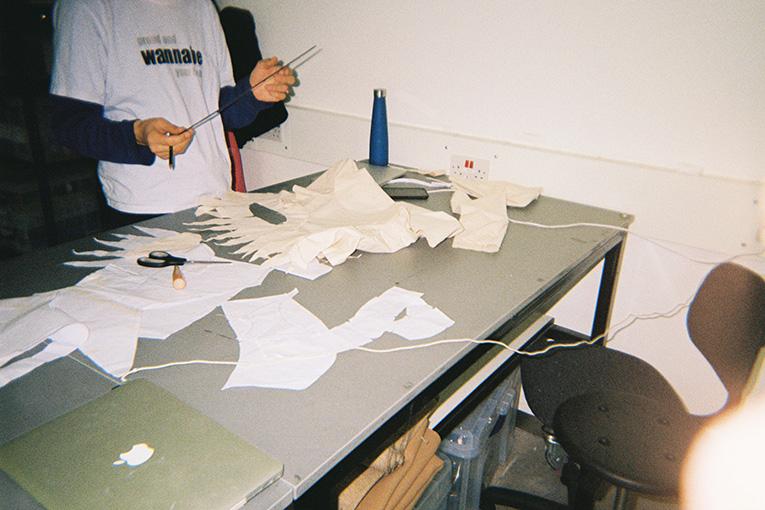

WORDS SIFANA SHAHZAD
PHOTOGRAPHY CHRISTIE ALEXANDER & VICKY DOOLAN

In second year, we embark upon the Silhouette project, and follow onto the Stretch project. It is an exercise in moving across some of the first expressions of our design language. Be bold or restrained, avant garde or functional - these projects are a glimpse into what we can do with the space around the body. Though not a project that necessarily demands tailoring, it demands a keen awareness of how our bodies interact with the clothes we put on them. Is it to obscure or to enhance? To create an illusion or to be stark? These questions lend themselves to project a vision of who we may become as designers. It is often a time that plunges us into deliberate ideas of shape that can be discerned without the need for colour to distract from it. In watching these forms take shape, it is truly remarkable to see the stamina and will pushing these shapes and seams into garments that showcase our interests in ultraviolet. Draping stretch fabric across the body, binding tight or loose, adding structure or letting the body be the only solidity operating within the fabric; we all visually express what we are drawn to when we think of the body in cloth. Photographed white on black, we present the beginnings of a design language without frill or pomp. It is about the clothing, it is about the body and it is about all the time spent developing how we uniquely combine them in a personal harmony.


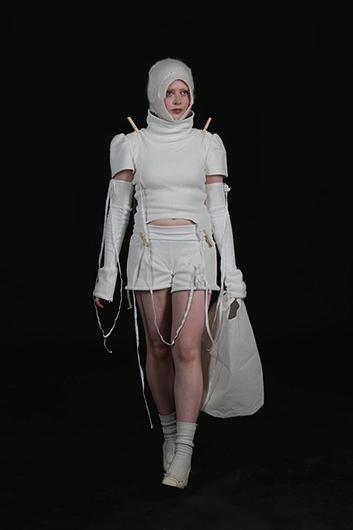





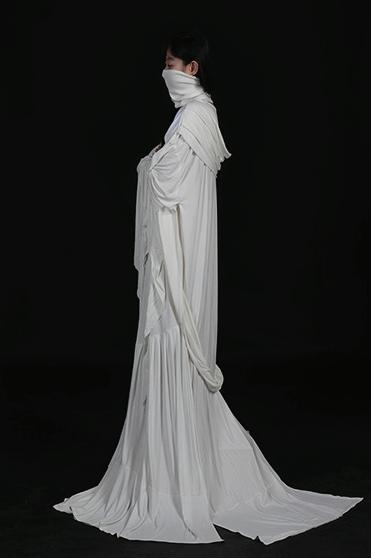





Image credit: The Glasgow School of Art under a Creative Commons BY-NC-SA License
The Art School's annual fashion show began in 1947, much different from how we know it today. The first show, a still exhibition of 30 mannequins, were dressed in garments made by GSA students across all programmes. Throughout the years, as the garments produced became more accessible for wear, the show was shaped into something with movement, models, and music - how we know it today. These fashion shows would occur throughout the GSA campus, in the beloved Mackintosh building, Haldane building, The Vic Assembly Hall, and even lecture halls. Latterly, the shows collaboratively showcased garments from textile design and fashion design students. In 2024, fourteen years after BA(Hons) Fashion Design was established, the fashion show became a collective end-of-year celebration showcasing the achievements of all Fashion Design students. Hosted in the Reid Gallery, these shows have brought the garments and working process from first to final-year Fashion Design students to life in the same building we study.

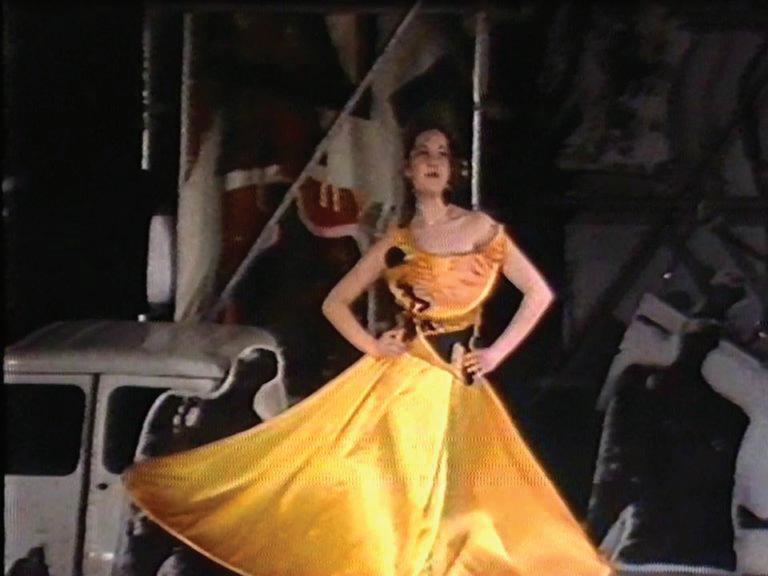











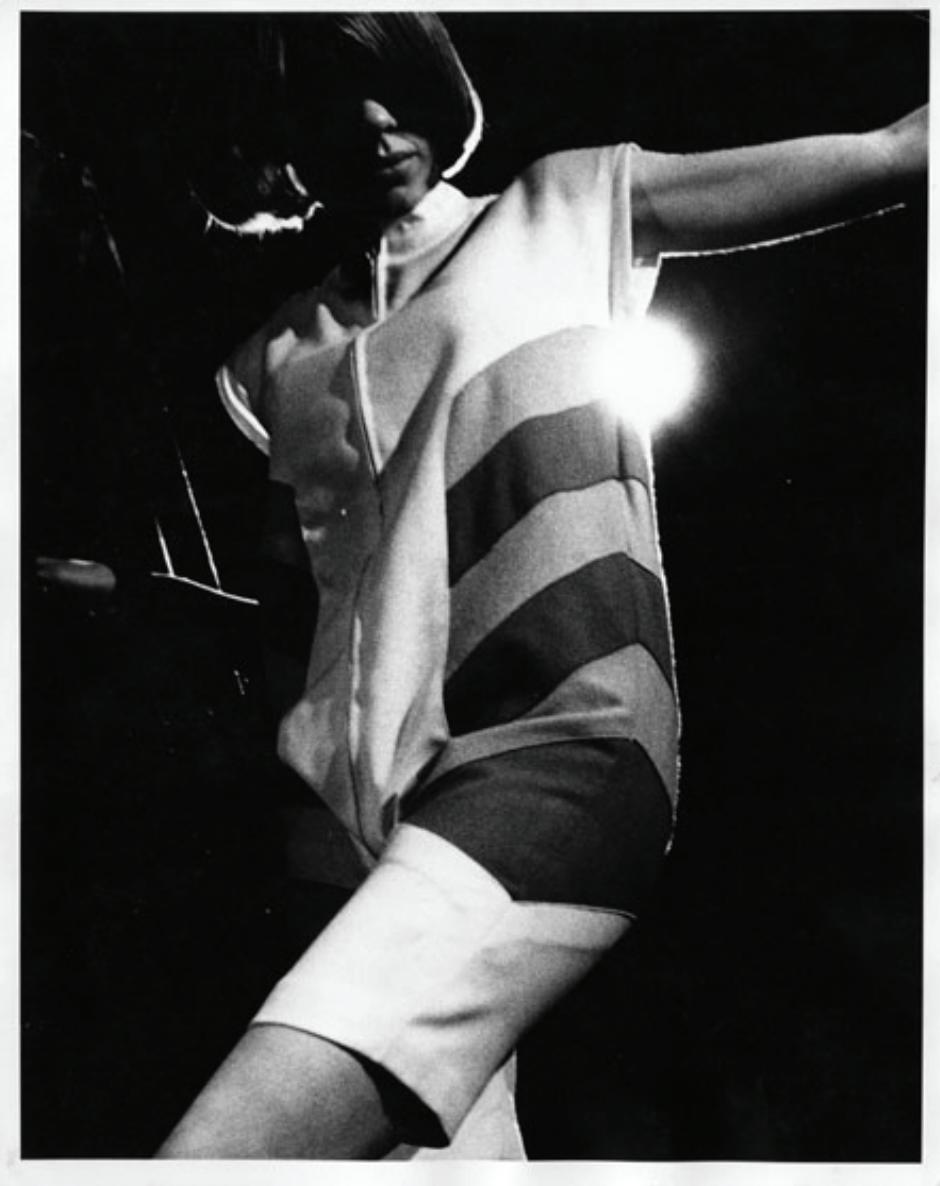






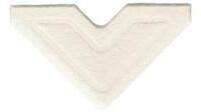

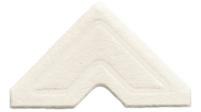



WORDS MELISSA GELALI PHOTOGRAPHY DIMA KRYZHANOVKYI
The end of year fashion show within The Glasgow School of Art is a beautiful, chaotic symphony that all students look forward to every year. It’ s a time where we get to celebrate our creative spirit, our individuality and our hard work. Months of sketching, stitching and sculpting fabric into wearable art finally forms in this one electric moment. Moving backstage, stylists wield curling irons like wands, models step into final designs with the urgency of a Formula 1 pit stop and designers make last minute adjustments with hands that are both steady and shaky. Fabric tape and safety pins become life-saving tools, and coffee is consumed at an alarming rate. It’ s a place where time bends—five minutes can feel like an eternity or a heartbeat. It’ s a space where creativity thrives under pressure. And just when it seems like everything might fall apart, the music starts, the lights go up, and magic struts down the runway as if the madness never happened.

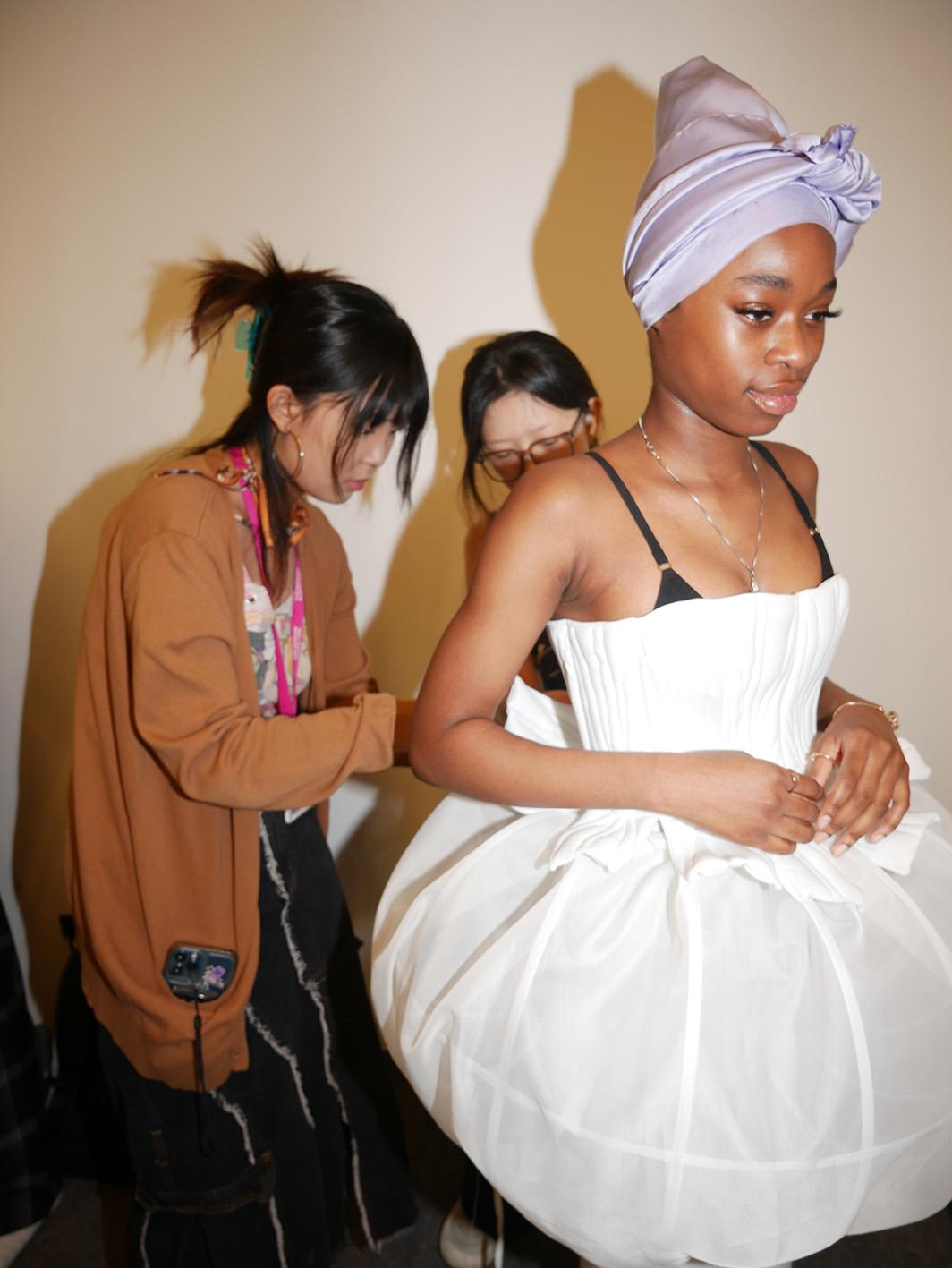



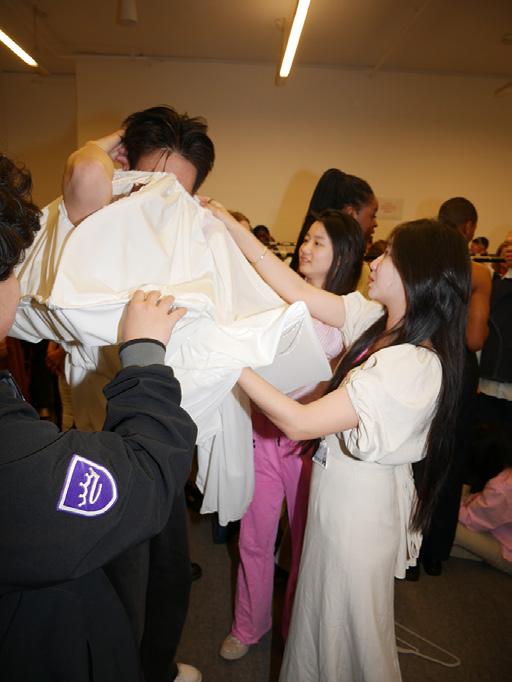

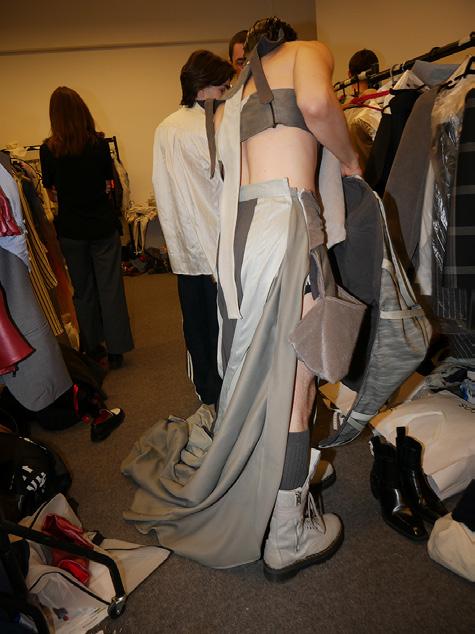


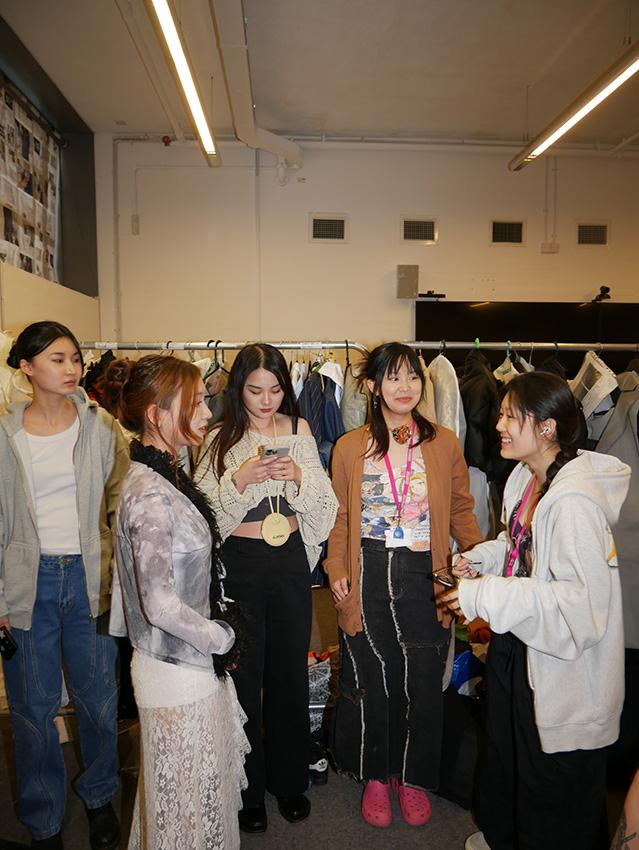








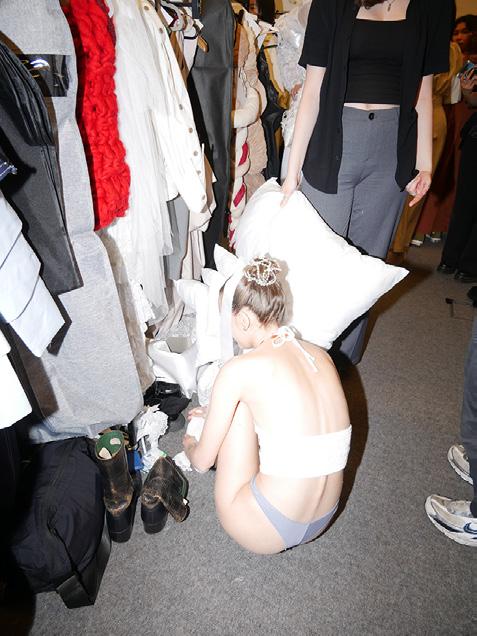
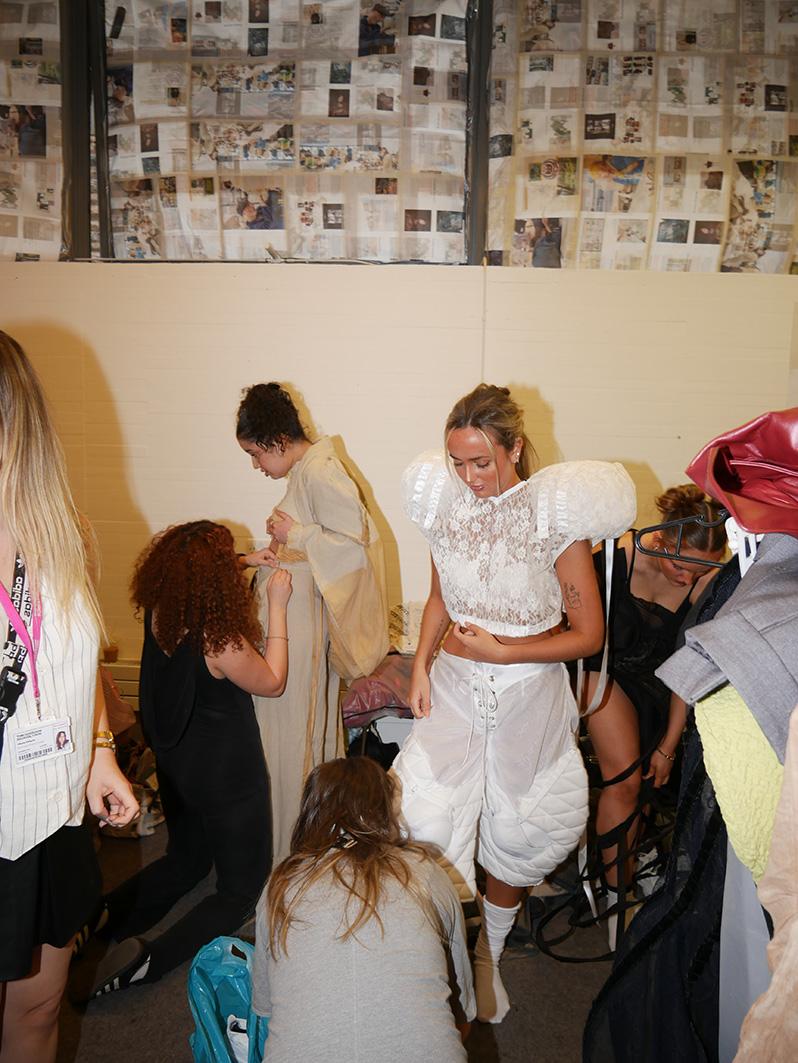










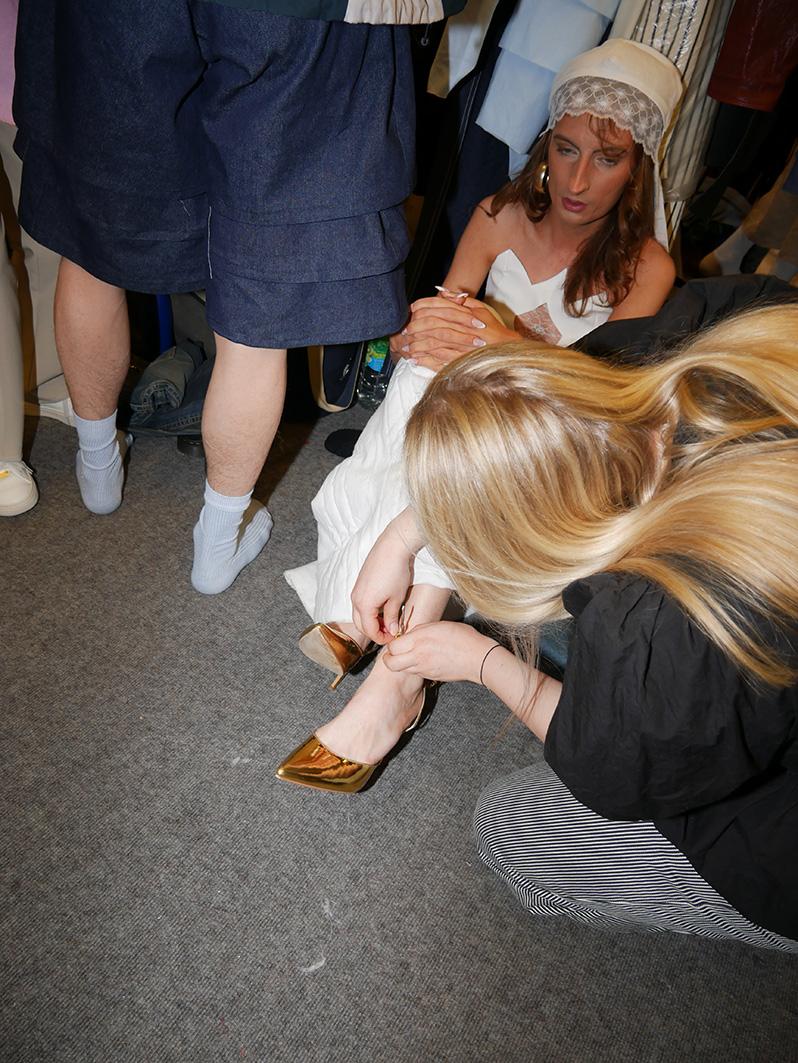
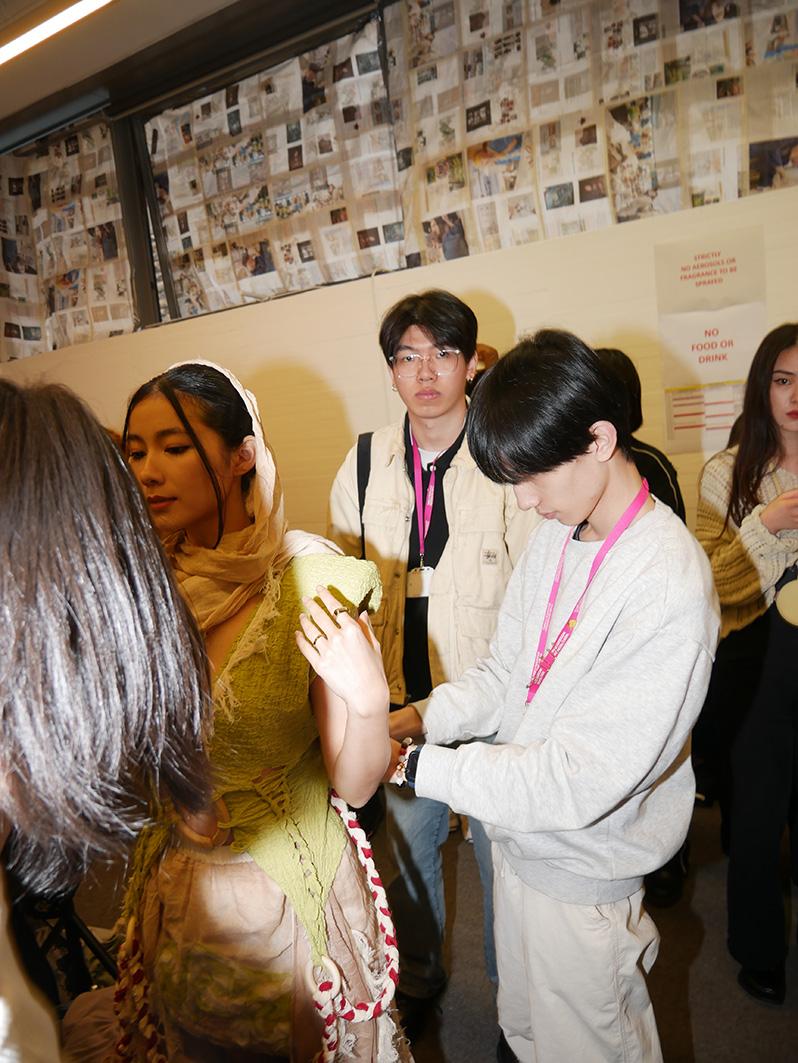

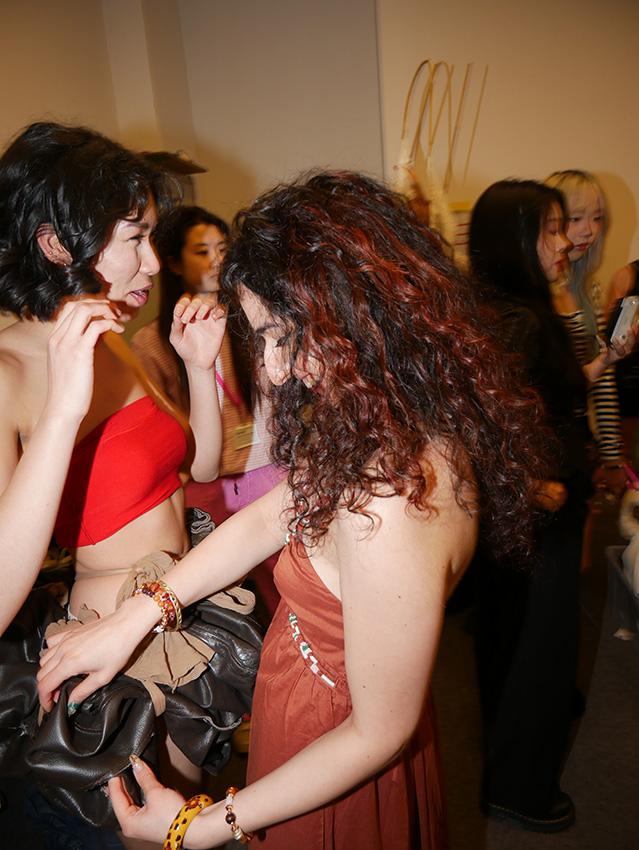



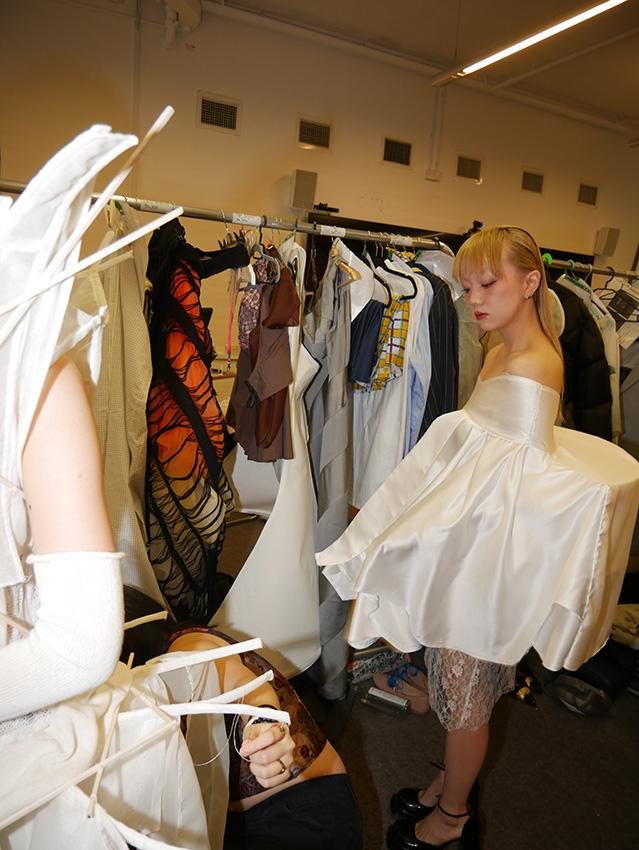
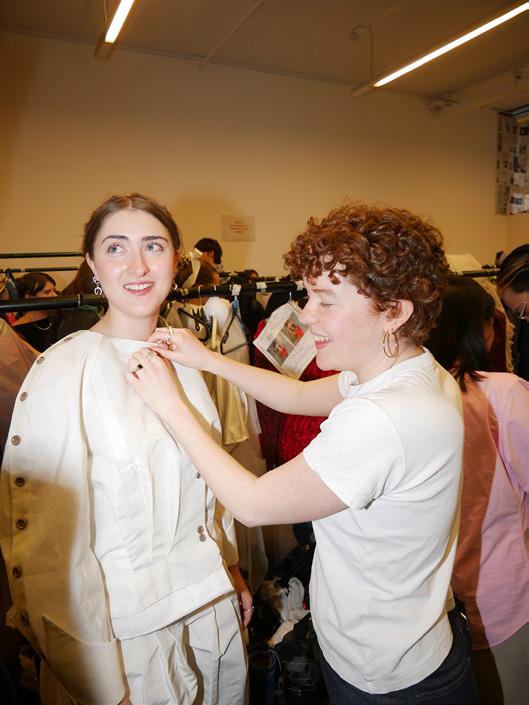


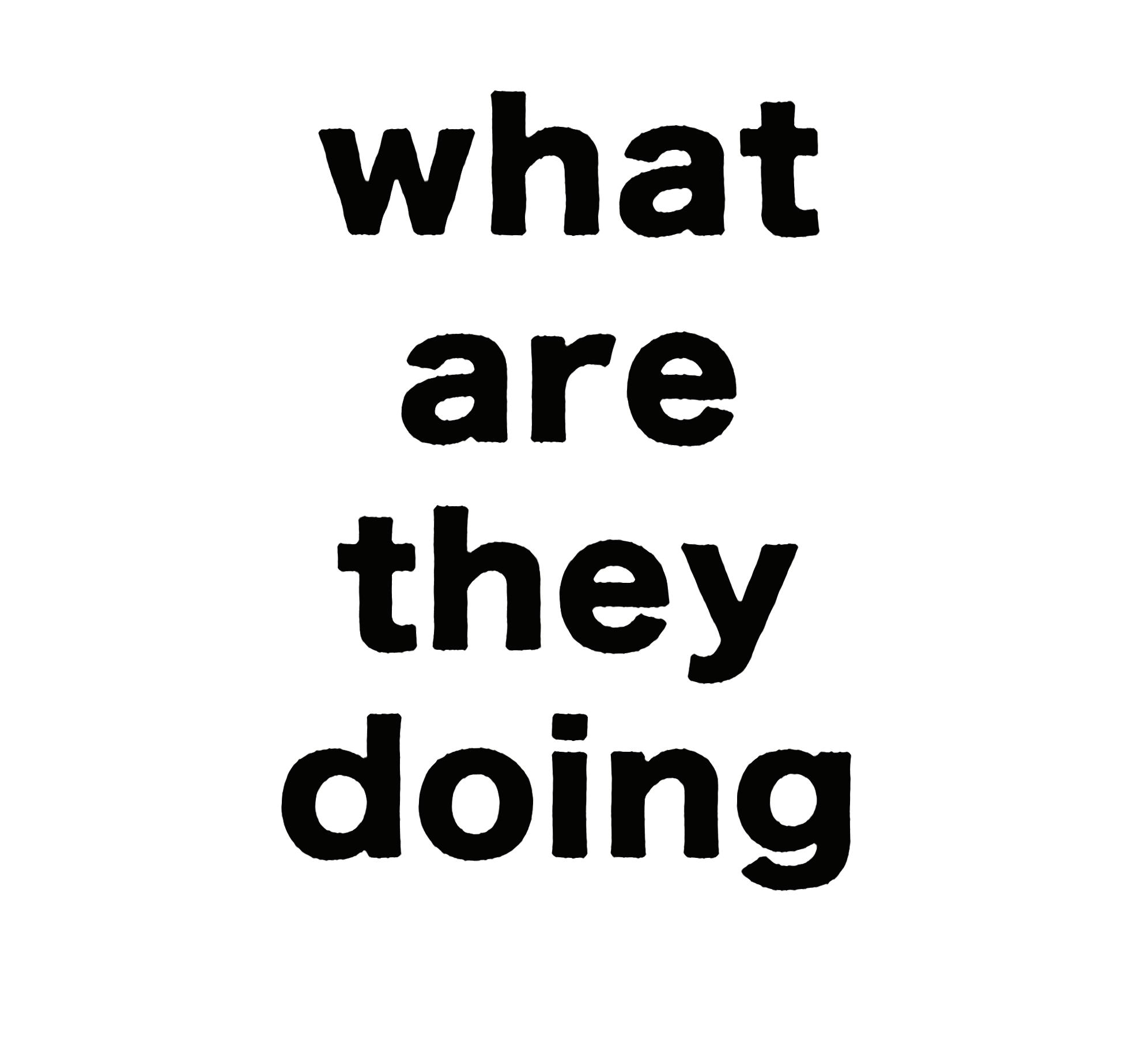
WE CATCH UP WITH SOME RECENT FASHION DESIGN GRADUATES
Tell us who you are?
My name is Charlene Zeng, I am a fashion designer from China with five years of experience in fashion design. I completed my undergraduate studies at the Glasgow School of Art and am currently pursuing my master's degree. My primary focus is menswear, though I also have experience in womenswear. During my studies, I interned at Adidas, gaining valuable industry insights. I am passionate about fashion and truly enjoy the creative process, exploring new ideas and pushing the boundaries of design.
How would you describe your design aesthetic?
My design projects often stem from social and philosophical theories, which serve as the foundation for my creative development. I primarily use 3D experimentation as a method to visualize my research. Besides, I have a deep appreciation for traditional garment craftsmanship and details. I enjoy blending womenswear elements into menswear to create a unique balance. If I were to summarize my aesthetic, I would describe it as a fusion of futurism and retro influences, exploring the fluidity of identity
What is your fav part of the design process?
I deeply enjoy the entire creative process, from research to construction. If I had to choose my favorite part, it would be garment-making. To me, this stage feels like an adventure—full of surprises and unexpected discoveries that often lead to new ideas and inspirations. Additionally, the process requires patience, which carries a certain meditative quality. It brings me a sense of calm, security, and fulfillment, making it not just a technical practice but also a deeply personal and reflective experience.

What was the biggest shock when leaving education?
This question is interesting because I never really left education, but I can still answer it. After my undergraduate studies, I did an internship for a period of time. During that time, as a newcomer to the fashion industry, especially in a large company like Adidas, I was surrounded by many highly talented people. On one hand, I realized that my “student mindset” wasn’t applicable,they placed much more emphasis on practicality. On the other hand, as an intern, everyone treated me with kindness, seeing me as a 'kid.' This made me realize how much further I have to go in my growth. The world outside of school can be quite “harsh”.
How do you stay inspired and motivated?
Passion is what drives me the most. I often feel that there’s nothing I love more than fashion. The fashion industry can be a high-investment, low-reward field, through my observations, I’ve noticed that successful designers around me all share a deep passion for fashion design and a strong commitment to it. How precious a way this is to express ourselves!
What are you currently working on?
Recently, I’ve been working on my MA personal project, where I’m challenging myself to step out of my comfort zone and try things I’ve previously been too afraid to explore. I’ve started incorporating more color possibilities and creating freer, more experimental garments, which at times feel a bit out of control. But that’s the allure of fashion—the risks and challenges that come with it. It’s about pushing boundaries and embracing the unknown, which ultimately helps me grow as a designer.
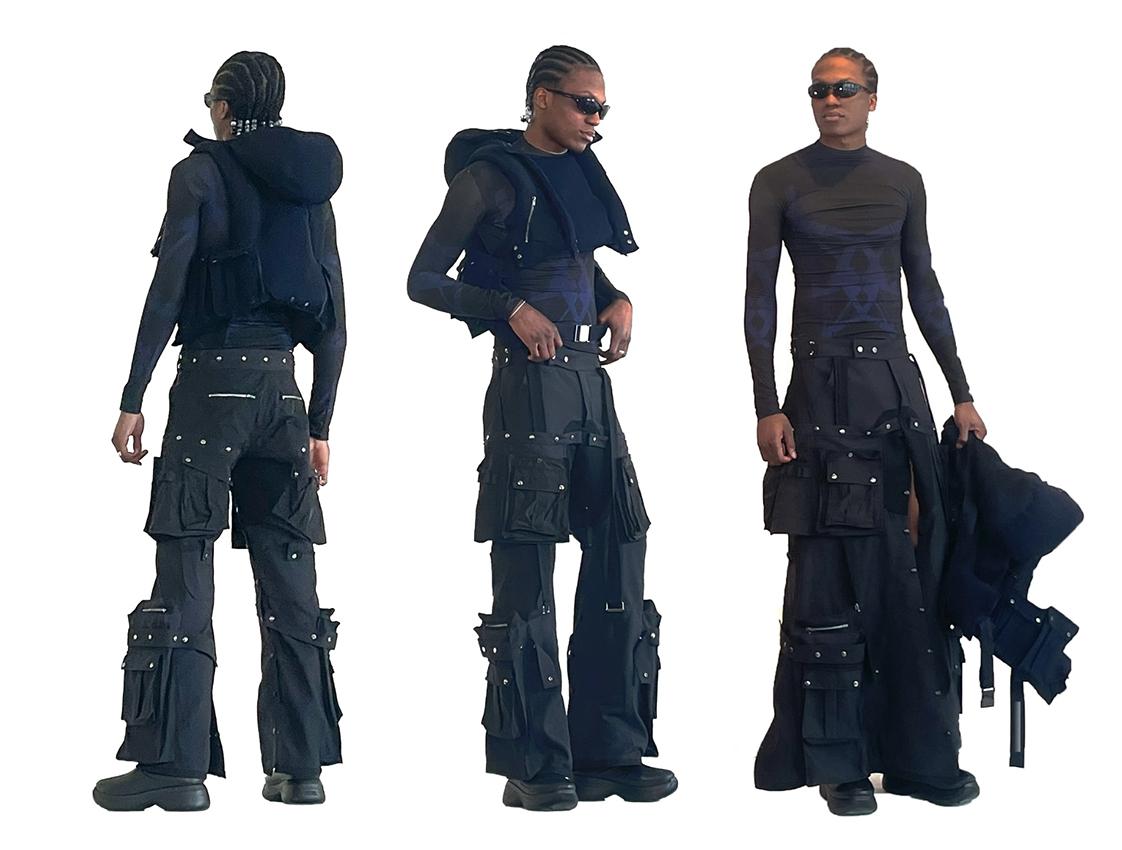
What would you do differently if you could redo your first year after graduation?
I am currently studying my master's at GSA. I once considered whether I should work first before pursuing further studies, but balancing time was difficult. It felt hard to stay in one company for just a year before moving on. Life often presents many paths to choose from, and I choose the least risky one. If I could redo it, I might take some risks—perhaps choosing to work or doing something I’ve always wanted, like traveling or getting my driver’s license. Lol, I just can't seem to let myself slow down.
What fashion designers or brands inspire you the most?
Alexander McQueen and Demna Gvasalia have had the greatest influence on my fashion taste. Both of their works carry a strong social commentary. McQueen expressed profound reflections on society, culture, and identity through his fashion, while Demna critiques modern consumer culture to reveal the emptiness and hypocrisy of contemporary society. Their fearless experimentation with innovative approaches has led to a disruptive fashion style, one that presents a striking visual impact and intellectual challenge. It not only sparks deep reflection on the essence of fashion but also encourages contemplation on identity and values in today’s society, balancing both aesthetics and critical thought. As a designer, I believe we should take more social responsibility into account.

What was your favourite project during your studies and why?
My favorite project is my graduate collection, which was entirely self-directed, though my tutors provided invaluable guidance whenever I felt uncertain. The edge of Posthuman project not only helped me got my first internship in adidas but also received high recognition. While it was a menswear collection, I successfully made it gender inclusive, allowing me to wear the pieces myself. This achievement gave me a deep sense of fulfilment, making it the perfect conclusion to my undergraduate journey.
What was the most valuable lesson you learnt during your studies?
“Remain who I am” is the “truth” I learned during my studies. In both work and study, I often doubted myself a lot. However, over the years of learning and working, I’ve realized that for design and life, not being afraid to make mistakes and staying true to my own intentions, expressing my true thoughts and self, are the key to becoming both a stronger person and a more professional designer
What are your career goals in the fashion industry? Where do you see yourself in five years
My current plan is to return to Adidas for a two-year rotational program, where I can experience different roles within the company. This is a unique opportunity for me to understand the inner workings of the fashion industry and strengthen my knowledge across various aspects. After that, I hope to have more opportunities to explore the world and rediscover my passion for things beyond fashion. Perhaps this will involve living in another country to broaden my horizons and gain new perspectives.
How would you like to see the fashion industry change?
I would like to see the fashion industry shift toward greater sustainability and vitality. My biggest hope is for a significant reduction in pollution and waste, particularly in manufacturing and production processes. If the industry could embrace more energy and innovation, with more passionate people joining the field, we could create not only more vibrant and high-quality works but also a more positive and sustainable future for fashion. A focus on eco-friendly practices, combined with creativity, would allow the industry to thrive in a way that is both responsible and inspiring.
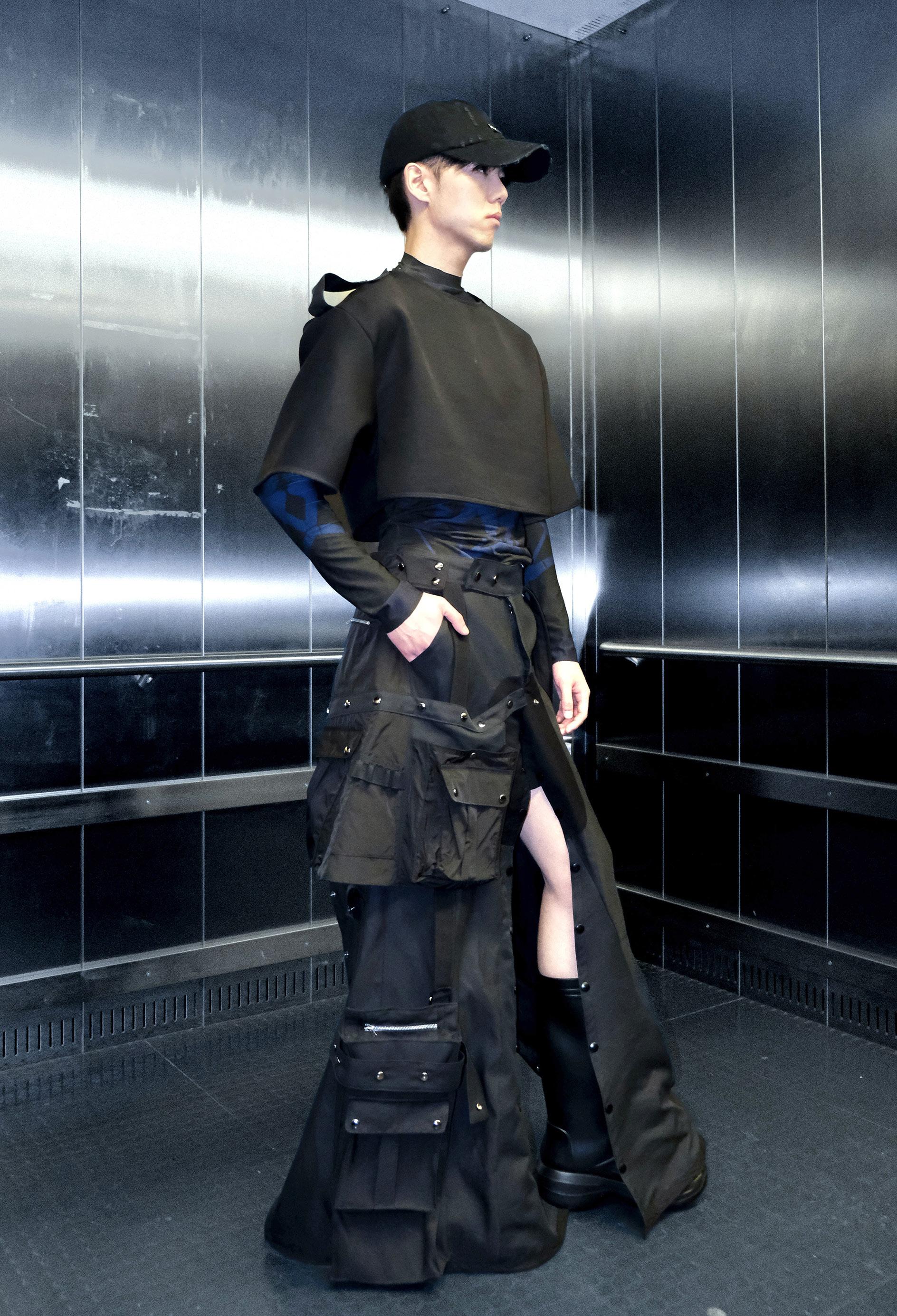
Tell us who you are?
Specialising in knitwear and tailoring my love of Scottish heritage, craft and environment forever inspires my work. Understanding history, visual culture and story-telling is something I convey in my collections. Inspired by the world around me, people, places and objects my designs are made to the highest quality using the finest natural fibres, to create highly original garments that last a lifetime.
How would you describe your design aesthetic?
I forever strive to push my aesthetic and designs to be as contemporary as possible but I keep in mind the idea that I want them to still be wearable in 100 years time. From Fair Isle patterns to the cables of an aran jumpers, I love re adapting traditional Scottish textiles into my own work, iconic heritage techniques that have stood the test of time. History of Art, Fashion and literature will forever inspire my aesthetic.Though I studies fashion, art is an integral part of my process, analysing garments, nature and textiles. All my designs and collections begin with myself as the consumer, in other words I make all my work for myself. As a designer it is important that what I create I want to wear, or else why would I make it?
What is your fav part of the design process?
After learning how to use a knit machine, being taught how to pattern cut and sew, the ability to transform a sketch on paper and a sample into wearable and functional garment will forever empower my creative process.
What was your favourite project during your studies and why?
I learnt a lot from every project during my studies, but my graduate collection had to be my favourite. The combination of all my knowledge and skill sets that I had built up over my four years was integrated into every look I designed and made. From learning how to work with leather in 2nd year, or accessory design in 3rd year, these are few examples of all of the projects that in tern led to the success of my graduate collection.
What was the most valuable lesson you learnt during your studies?
The importance of having a clear ‘plan of make’ schedule when creating a collection in order to organise your time to the best of your abilities. As a fashion student, time is precious and must be used wisely, because no matter what your estimation is, creating a garment will take 5x longer than expected.
What would you do differently if you could redo your first year after graduation?
I would have given myself a proper break, time to reflect and look back at what I achieved over my four years and to have clearly thought about what my next steps for the future are.
What fashion designers or brands inspire you the most?
I will forever be in awe of Alexander McQueen, the years in which he was creative director of his namesake band. His emotive storytelling of his very personal narrative through cloth always inspire me.



What was the biggest shock when leaving education?
It was hard at first to create without a studio space, professional equipment and help from the technicians and tutors. I did not fully appreciate what a privilege it was to be able to work on my own designs day in, day out.
How do you stay inspired and motivated?
I try to find joy in the process of what I create and the importance to continue to build on my skillset and further my practice. Fashion gives another form of purpose to my life and to create beautiful wearable garments to tell my narrative through textiles is my art form.
How would you like to see the fashion industry change?
I wish for there to be more women as creative directors at the big fashion houses. I want the media to focus and support smaller brands, especially ones that promote more sustainable manufacturing and textiles. We need to cut down on the amount we are producing and to focus on quality and sustainable sourced fabrics. I see this as a way to promote traditional craft, textiles and the artisans that create.
What fashion designers or brands inspire you the most?
I will forever be in awe of Alexander McQueen, the years in which he was creative director of his namesake band. His emotive storytelling of his very personal narrative through cloth always inspire me.


Tell us who you are?. I’m Kyra (pronounced ‘Keira’), I’m 22, Leo and currently live in Glasgow and my favourite film is St Trinian’s (2007).
How would you describe your design aesthetic? Camp
What is your fav part of the design process?
The research and creating a world, so imagining the kind of people these looks are for, how the looks should be worn/performed in, listening and making playlists that match the concept. The middle part is where everything starts clicking into place and everything starts becoming cohesive, the designs just start flowing and I can envision how everything’s going to look. Also the end when everything’s done and I can actually have a peaceful nights sleep.
What was your favourite project during your studies and why?
Maybe my 3rd year final work because I feel like that was the start of me finding my style, finding what influenced me, what I liked & what I didn’t like. Looking back there’s definitely bits I’d change and do differently but that work led me to do my grad collection and to the work I do now.

What would you do differently if you could redo your first year after graduation?
I feel like I’m supposed to say I would apply for more stuff or I would do interns etc but I probably wouldn’t change how I did my first year post grad. if anything I’d actually take a break and put the sewing machine down, I’d go on a big holiday and actually truly turn off instead of constantly working and constantly thinking what’s next. I’d try to stop being scared that every commission or every opportunity would be my last.
What was the biggest shock when leaving education? Council tax.
How do you stay inspired and motivated?
I actually don’t know. I don’t know if i do, commission deadlines motivate me to get the work done and the people I work with inspire me but its easier to be inspired than to actually create the work.
What are you currently working on?
I’m currently working on securing Lady Gaga tour tickets and a burlesque commission.
How would you like to see the fashion industry change?
Enough of the creative director musical chairs, give me someone new, someone that’s not already been the creative director of three other fashion houses previously. I want to see someone other than white men at the top. Also less shows, less collections, I feel like there’s a new ready to wear collection every other week and it’s all the same. Fashion needs to take a hiatus and come back slower with more interesting and meaningful collections.
What fashion designers or brands inspire you the most?
My fashion knowledge is rubbish, I’m so bad at keeping up with all the new collections, there Is just so much. I wish I could say some really niche, conceptual designer but I’ll probably look to historical garments, films and any fashion show like pre 2000s for most of my inspo.
What are your career goals in the fashion industry? Where do you see yourself in five years
I can barely see where I’ll be a year from now but in five years I see myself being 27 and lying on a beach. My career goals are to be the creative director of my own fashion house, it’s very successful, I put out a new collection maybe once a year and I’m also designing big extravagant costumes for films and performers.


We highlight our graduating student collections, which embody creative freedom and diversity. A range of target audiences, ideas, processes, and making practices are represented, focusing on individual interests and career aspirations.





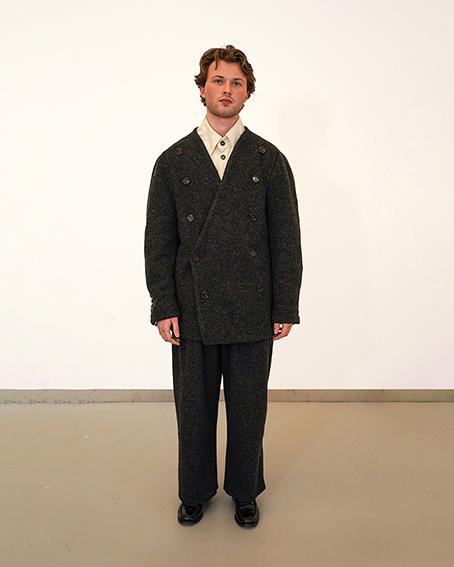









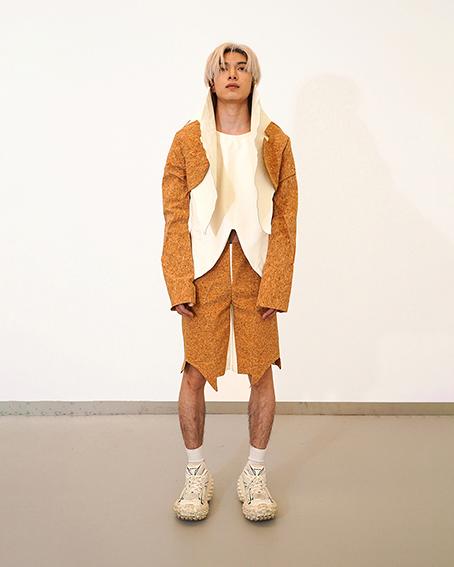
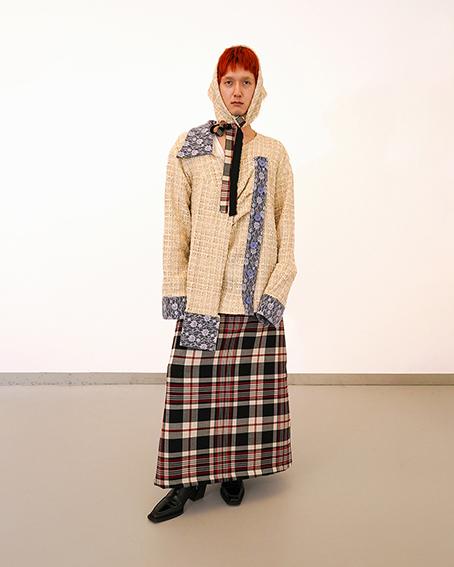




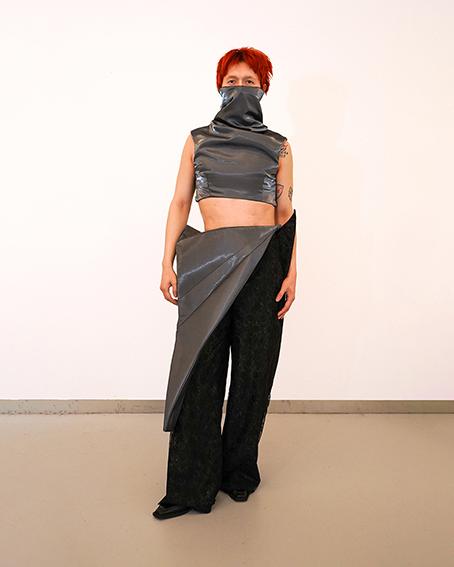

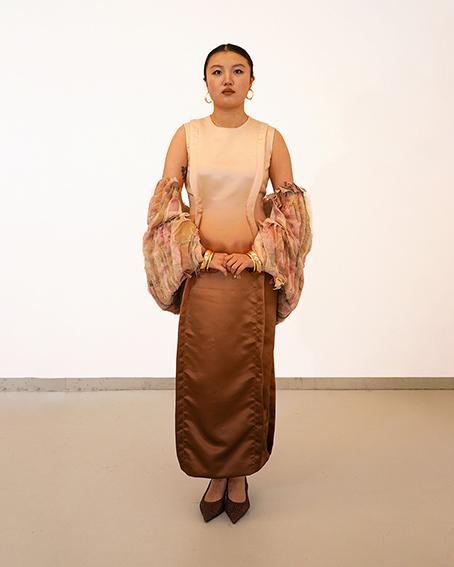
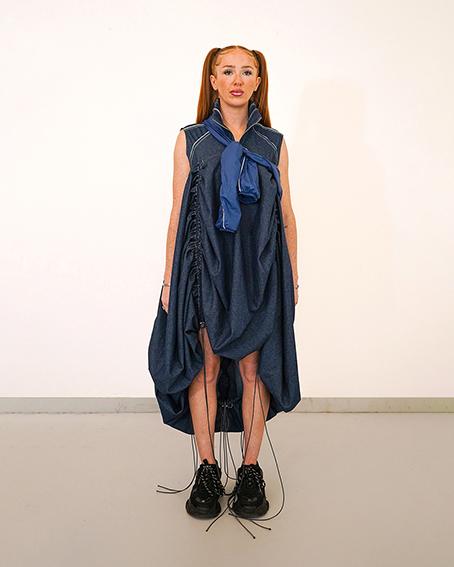



Jingyi Zhou AijiaZhang

Imogen Vaughan



Lauren Gunning


Mhairi Reid Danlin Chen Evan YuxuanLin
Duncan Brown

YijieLiu

Hester Greenough Ellis Yuille Katie Lawson



KyraHo

Willow Shedden
Fatima Benjellon





Oliza Howieson Kefan Wu

Rebecca Morton


Lan YatiWang
Yifan


Jenny Gillanders

Tarika Kinney YiYuan
Sadie Tomlinson ZiyuWang

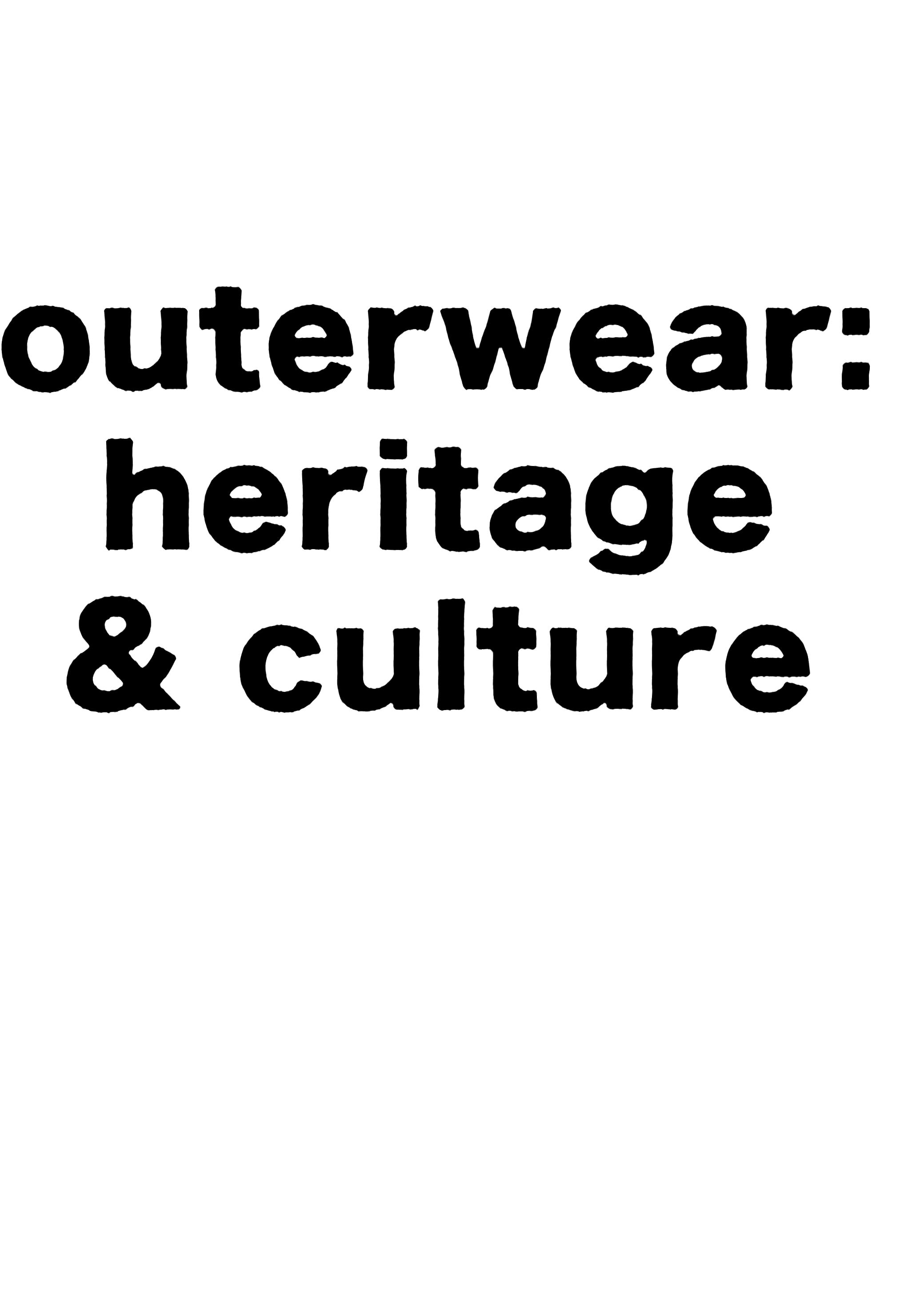
WORDS KEITH GRAY
STUDENTS WORK: JO YOUYITAI ZHANG, SELINA QIAI WANG & YANNER PEIYAN YU
Year 3 Outerwear Project asked students to explore existing garments through object-based research and material experimentation. Each student designed and produced a fully manufactured garment using three meters of wool fabric, generously sponsored by Harris Tweed and The British Fashion Council: College Council. Woolen tweeds, tartans and checks are some of the most iconic and distinctive fabrics ingrained within Scottish culture with many fashion designers known for their use of the cloth as an extension of their visual language. Students explored concepts around craftmanship, heritage and culture as starting points to inform personalised approaches and new ideas.






